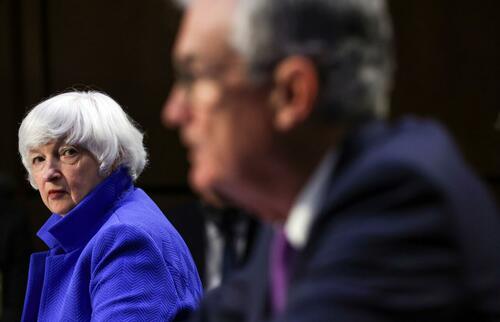The Fed’s Last Sign Of Independence May Be Gone
The Federal Reserve decided to cut rates by 50 basis points despite what Chairman Powell considers “no risk of a recession or downturn,” a “solid economy,” and a “strong job market.”
After ignoring the impact of monetary aggregates and the warning signs of inflation, the Federal Reserve has breached its price stability mandate for three consecutive years, preferring to prioritize liquidity injections, i.e., printing money, to the recovery of the currency’s purchasing power.
The “higher for longer” policy only lasted eighteen months. Furthermore, the latest reading of the Chicago Fed National Financial Conditions Index indicates extremely loose conditions. In fact, the Fed has never cut rates by so much when financial conditions have been this loose.
If financial conditions are extremely loose and the economy and the labor market are strong, according to the FOMC minutes, there is no sign of recession and inflation remains above target, especially the core CPI, why should they cut rates so fast? What happened?
The Fed decided to bail out the government in the middle of an election process of all moments. The Fed’s questioned independence is even more doubtful today. Cutting rates to help an overly indebted government has become part of the electoral campaign.
The Fed did not panic in September after the negative revision that lost 818,000 jobs from the previous reading. The Fed had already panicked in June when it delayed its tightening cycle, which coincided with a burst in sovereign bond yields. Despite persistent inflation and an overheated economy, the Committee decided to “slow the pace of decline of its securities holdings by reducing the monthly redemption cap on Treasury securities from $60 billion to $25 billion.” Additionally, the Fed announced it would “reinvest any principal payments in excess of this cap into Treasury securities.” The Fed panicked because the two-year Treasury yield soared to 5.03% between January and May 2024, despite an alleged robust economy and very encouraging official headline figures.
The fiscal irresponsibility of the Biden-Harris administration had driven the annual deficit to new highs despite record tax receipts and better-than-expected GDP growth. Of course, we all know that the economy is not as strong as it looks and that headline figures disguise a much weaker labor market and productive economy, but the Fed reacted with its first loosening action once it saw that Treasury yields soared to new highs and because the demand for U.S. public debt of foreign investors started to decline visibly.
Things just got worse on the fiscal front after the “quiet easing” announced in June. The U.S. budget deficit reached $1.897 trillion in the first eleven months of the 2024 fiscal year, and annual interest costs on the public debt topped $1 trillion for the first time, according to the Treasury Department. Furthermore, in its own projections, the Treasury expected an increase of $16 trillion in government debt between 2024 and 2034. The Congress Budget Office estimates that the implementation of the Harris economic plan will result in a further $2.25 trillion increase in debt.
The Fed had to act with a large rate cut to bail out the Treasury. It has certainly impacted the markets. On September 20, the two-year yield was 3.59, the lowest level since September 2022. However, artificially reducing sovereign bond yields will not disguise the enormous fiscal problem of the United States; it will make it worse.
Lowering rates will have a limited impact on the real economy because a 15-year effective mortgage rate remains at 5.6%, and financial conditions will not ease significantly. Furthermore, it is difficult to believe that families and businesses will start demanding more credit with record levels of credit card debt and an already weak economy that has seen no growth in sales or earnings of the Russell 2000 in the past four years.
Lowering rates is a tool to rescue the government, but it will also make the Treasury add more debt in the next few months. If you make it easy for governments to borrow, they will gladly do it and continue printing currency, leading to the currency’s slow decline.
The Fed rate-cut cycle will likely continue. However, this will also continue to erode confidence in the currency and international demand for government bonds, perpetuating the U.S. dollar’s loss of purchasing power.
The Fed is now in campaign and will support the government debt as much as possible, passing the negative impact to real wages and small businesses. If the Fed cannot curb the appetite for deficit spending and debt of the government, it will lose one of its reasons to exist.
If the Federal Reserve becomes a government agency that prioritizes sovereign debt issuance over price stability, the endgame is likely to be a Japanese-style stagnation and the end of the US dollar as the world’s safest asset in global central banks’ balance sheets.
Tyler Durden
Mon, 09/23/2024 – 12:45
via ZeroHedge News https://ift.tt/5pnt6hY Tyler Durden
